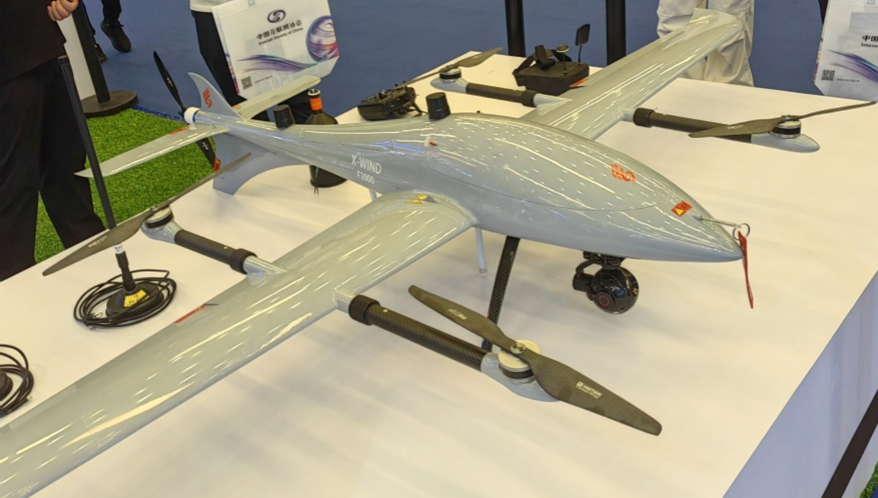
A low-altitude aircraft developed by Beijing-based technology company JZX is displayed at the 24th China Internet Conference in Beijing, July 23, 2025. [Photo by Liu Sitong/China.org.cn]
China's low-altitude economy is on the cusp of significant expansion, with experts predicting the sector will soon be worth over 1 trillion yuan ($138 billion). This projection was a key topic at a forum hosted by the Internet Society of China (ISC) at the 24th China Internet Conference in Beijing on July 25, where discussions centered on the rapid growth and future development of this emerging industry.
Dai Wei, deputy secretary-general of the ISC, said the low-altitude economy has become an important and emerging area for global competition. This growing international interest is evident, with U.S. President Donald Trump having signed an executive order on June 6 to promote the development of emerging technologies such as electric vertical takeoff and landing (eVTOL) aircraft. Dai added that developing the industry will require support from digital and smart technologies, including artificial intelligence.
Yang Jun, founder and director of ShenSi Lab — a research facility that focuses on low-altitude flight solutions — provided insights into the healthy development of the sector. He pointed out that the low-altitude industry was designated as a strategic emerging sector at the Central Economic Work Conference in 2023, along with bio-manufacturing and commercial aerospace.
Yang predicted the sector will be worth 1 trillion yuan by the end of this year and 3.5 trillion yuan by 2035, or more, driven by ongoing major infrastructure projects, including new takeoff and landing sites, telecommunications equipment and navigation systems.
However, the sector faces new challenges compared to traditional high-altitude flight, due to complex airflows in low-altitude space affecting flight control and route planning.
To address these issues, Yang's team began constructing a troposphere wind tunnel in 2022, which has been operating for nearly a year. The wind tunnel uses digital twin technology to digitize meteorological data, integrating it with traditional telecommunications equipment.
Xu Heyuan, chief expert at the China Academy of Information and Communications Technology, said low-altitude flight, as a new mode of transportation, could help drive economic development in remote and less accessible areas, aiding poverty alleviation efforts. Xu said the sector is also a new driving force for industrial transformation and has a long industrial chain, involving innovation in both aviation and information technology.
The ISC, established in 2001, has worked to promote exchange and cooperation within the internet sector. The organization actively supported the low-altitude economy by coordinating dialogue for technology development, commercial applications and industry collaboration. The society plans to set up a dedicated working committee for the low-altitude sector to connect policymakers, research institutions and enterprises.


 Share:
Share: 




 京公網安備 11010802027341號
京公網安備 11010802027341號